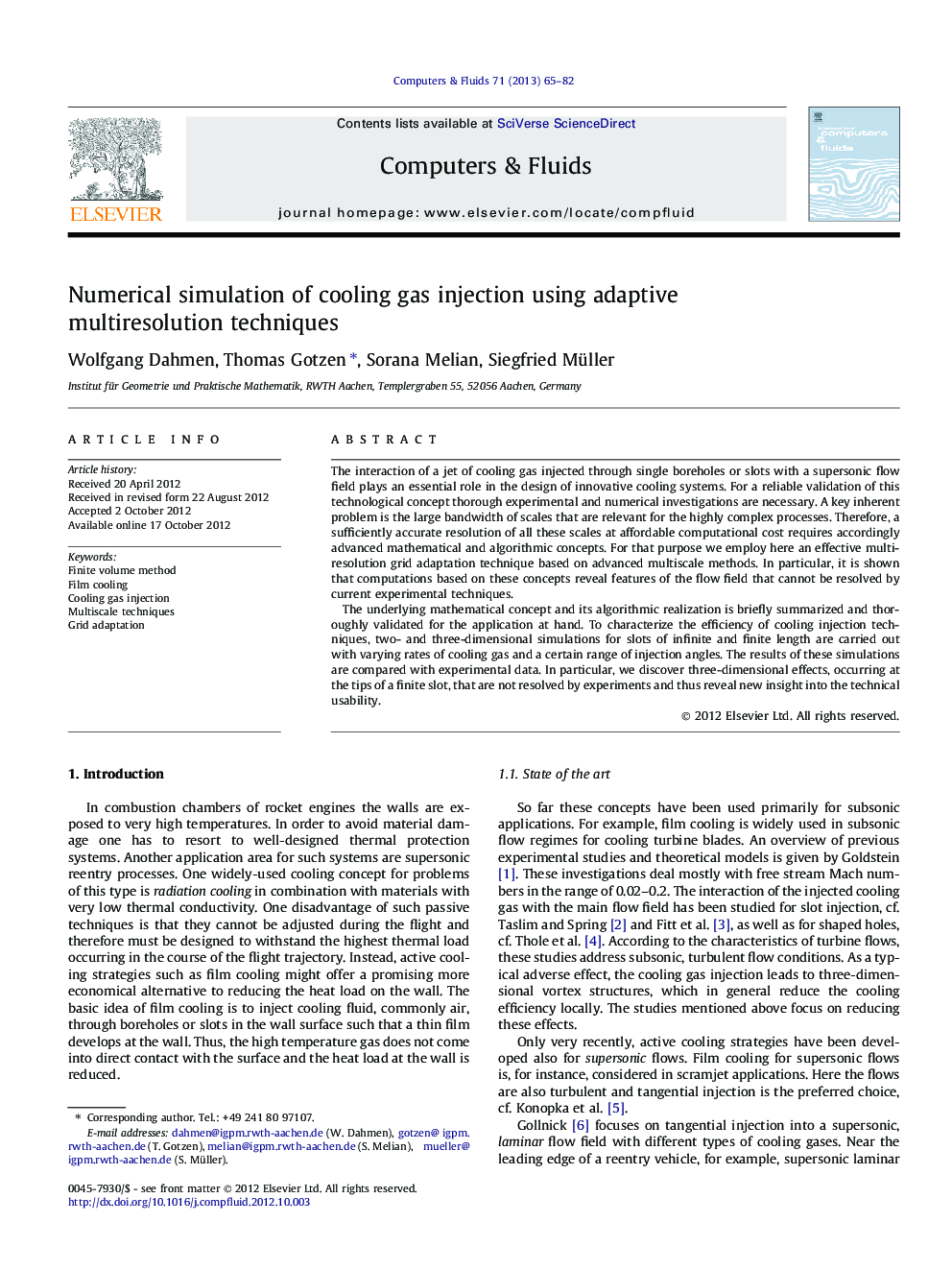| Article ID | Journal | Published Year | Pages | File Type |
|---|---|---|---|---|
| 756698 | Computers & Fluids | 2013 | 18 Pages |
The interaction of a jet of cooling gas injected through single boreholes or slots with a supersonic flow field plays an essential role in the design of innovative cooling systems. For a reliable validation of this technological concept thorough experimental and numerical investigations are necessary. A key inherent problem is the large bandwidth of scales that are relevant for the highly complex processes. Therefore, a sufficiently accurate resolution of all these scales at affordable computational cost requires accordingly advanced mathematical and algorithmic concepts. For that purpose we employ here an effective multiresolution grid adaptation technique based on advanced multiscale methods. In particular, it is shown that computations based on these concepts reveal features of the flow field that cannot be resolved by current experimental techniques.The underlying mathematical concept and its algorithmic realization is briefly summarized and thoroughly validated for the application at hand. To characterize the efficiency of cooling injection techniques, two- and three-dimensional simulations for slots of infinite and finite length are carried out with varying rates of cooling gas and a certain range of injection angles. The results of these simulations are compared with experimental data. In particular, we discover three-dimensional effects, occurring at the tips of a finite slot, that are not resolved by experiments and thus reveal new insight into the technical usability.
